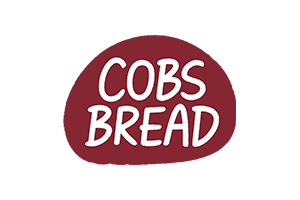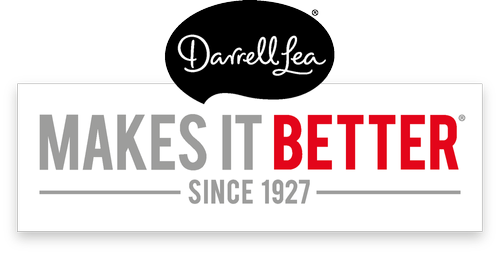If you're an Australian expat living in America and considering buying property in Australia, you may have questions about getting an Australian home loan. The process can seem daunting, but with the right information and guidance, it's possible to secure a mortgage and purchase your dream home in Australia without too much hassle.
In this article, we'll explore the top 8 things you need to know about getting an Australian home loan as an expat in America.
1. Understand the eligibility criteria
To be eligible for an Australian home loan as an expat, you will generally need to meet the following criteria:
Steady income: You must demonstrate a steady income through employment or self-employment. Some lenders may require a minimum length of employment or a certain level of income to be eligible.
Good credit score: Lenders will also consider your credit history and credit score when assessing your eligibility. A good credit score can increase your chances of approval and may also result in lower interest rates.
Deposit: You will generally need to provide a deposit of at least 20% of the property value. This means that if you are purchasing a property worth $500,000, you will need to provide a deposit of at least $100,000. A deposit lower than 20% will require you to pay Lenders Mortgage Insurance (LMI).
Documentation: You must provide documentation such as proof of income, tax returns, bank statements, and identification.
It's important to note that different lenders may have different eligibility criteria, and approval depends on a case-by-case basis but these are some good general rules.
2. Consider the exchange rate
As an expat living in America, you'll need to consider the exchange rate when applying for an Australian home loan. This is because you'll be borrowing in Australian dollars, which may fluctuate in value compared to the US dollar. Understanding the potential impact of exchange rate fluctuations on your loan repayments and overall affordability is essential.
3. Choose the right lender
Many lenders in Australia offer home loans to expats, but not all of them may suit your needs. Some lenders may have higher interest rates or stricter eligibility criteria. In contrast, others may offer more flexible terms and lower fees.
It's crucial to shop around and compare different lenders to find the right one for you. A good mortgage broker can provide you with the best options for you to choose from.
4. Know the loan types
Here are some of the most common types of home loans in Australia:
Fixed-rate loans: With a fixed-rate loan, the interest rate remains unchanged for a set period, usually 1 to 5 years. This can provide more stability in repayments and protect you from interest rate increases. However, if interest rates drop during the fixed period, you may miss out on potential savings.
Variable-rate loans: With a variable-rate loan, the interest rate can fluctuate over the life of the loan in line with market conditions. This can result in lower repayments if interest rates decrease, but can also result in higher repayments if rates rise.
Split loans: A split loan allows you to split your loan into two parts, with one part being fixed and the other part being variable. This can provide a balance between stability and flexibility.
Interest-only loans: With an interest-only loan, you only need to pay the interest on the loan for a set period, usually between 1 to 5 years. This can result in lower repayments during the interest-only period. However, you must start paying off the principal after the interest-only period ends.
Line of credit loans: A line of credit loan allows you to access a set amount of credit, which you can draw down as needed. This can be useful for renovations or other expenses but can result in higher interest costs if not managed carefully.
It's crucial to consider the advantages and disadvantages of each loan type and choose the one that best suits your needs and financial situation.
5. Getting a pre-approved home loan
Before you start house hunting, it's a good idea to get pre-approval for your home loan. This involves submitting your application and documentation to a lender, who will assess your eligibility and determine how much you can borrow.
Getting a pre-approval gives you a clear idea of your budget and can help you negotiate with sellers when making an offer on a property, and even expedite the mortgage process.
6. Understand the costs associated with a home loan
In addition to the interest rate, there are several fees that can be associated with a home loan. It's important to be aware of these costs when comparing different lenders and loan products.
Stamp Duty: This is a tax levied by the state government on your property transactions. The cost generally ranges from 3% to 5% and is spent by the state on infrastructure, public utilities, and healthcare.
Application fee: This is a one-time fee the lender charges to process your loan application. Depending on the lender and loan product, it can range from a few hundred to several thousand dollars.
Valuation fee: Lenders may charge a fee to have a professional valuer assess the value of the property you are purchasing or using as security for the loan.
Legal fees: You may need to pay for legal services such as conveyancing, which involves transferring the legal ownership of the property.
Lenders mortgage insurance (LMI): If you have a deposit of less than 20% of the property value, you may be required to pay LMI. This insurance policy protects the lender in case you default on the loan. The cost of LMI can vary depending on the size of your deposit and the loan amount.
Ongoing fees: Some lenders charge ongoing fees for maintaining the loan, such as an annual service fee or account-keeping fee.
Early repayment fees: Some loans may have early repayment fees if you pay off the loan in full or make extra repayments above a certain limit.
It's important to factor in these varying costs when comparing different loan products and assessing the overall cost of the loan.
7. Know the legal requirements
Buying property in Australia as an expat may have additional legal requirements that you need to be aware of. For example, you may need to obtain approval from the Foreign Investment Review Board (FIRB) if you're buying property worth more than a certain amount.
Understanding and complying with these requirements is essential to avoid legal issues.
8. Seek expert advice
Obtaining a home loan as an Australian expat in the US can be a complex process, and seeking professional advice to make an informed decision is highly beneficial. A mortgage broker that specializes in expat mortgages can help you navigate the process and find a loan product that best suits your needs and financial situation.
In addition to providing advice on loan products and eligibility criteria, a good mortgage broker can also assist with the application process and provide ongoing support throughout the life of the loan.
If you're an Australian expat looking to buy property back home, the Odin Mortgage Team can help. As expat mortgage specialists, their team of experienced mortgage brokers provide advice and support to Australian expats all around the world, from pre-approval to settlement and beyond.
Get in touch with them today to learn more about your options and how you can get approved for an Australian mortgage.












